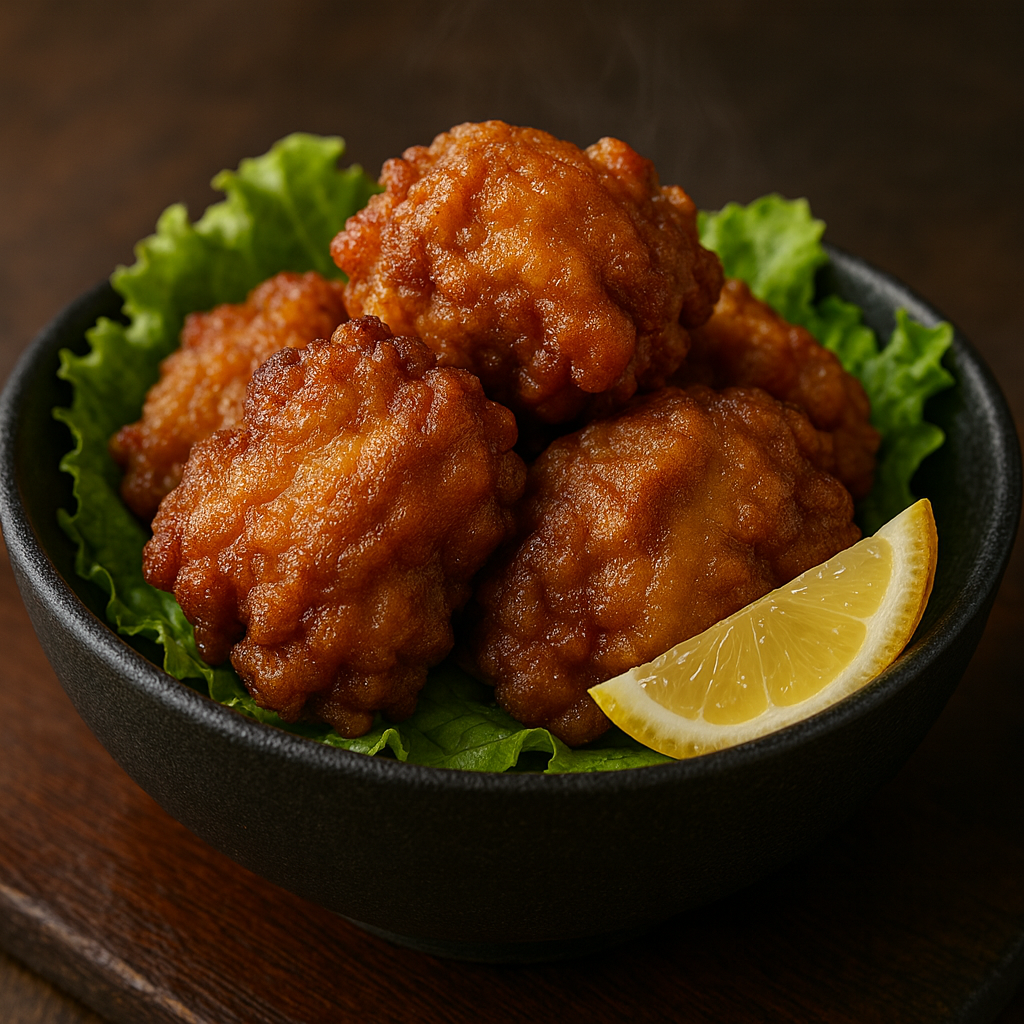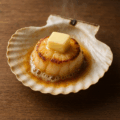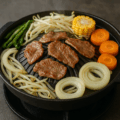ザンギの特徴
北海道生まれの鶏唐揚げ
ザンギは北海道発祥の鶏唐揚げで、一般的な唐揚げと比べて濃いめの下味が特徴です。発祥の地は釧路市とされ、現在では北海道全域で親しまれています。
濃厚な味付け
醤油・にんにく・生姜・酒などを使ってしっかりと下味をつけるため、香り豊かでご飯にも酒にも合う味わいになります。
幅広いアレンジ
鶏肉だけでなく、鮭やタコを使った「魚介のザンギ」も存在し、居酒屋や家庭料理でアレンジされています。
ザンギのレシピ
材料(2〜3人分)
- 鶏もも肉 … 400g
- 醤油 … 大さじ3
- 酒 … 大さじ2
- みりん … 大さじ1
- にんにく(すりおろし) … 1片
- 生姜(すりおろし) … 1片
- 片栗粉 … 適量
- 揚げ油 … 適量
作り方
- 鶏もも肉を一口大に切り、醤油・酒・みりん・にんにく・生姜で30分ほど漬け込む。
- 片栗粉をまぶし、余分な粉をはたく。
- 170℃の油でカラッと揚げる。二度揚げするとより香ばしく仕上がる。
- 器に盛り付け、レモンを添えて完成。
シェフのワンポイントアドバイス
漬け込み時間は長めにすると味がしっかり染み込みます。
二度揚げすることで外はカリッと、中はジューシーに仕上がります。
ザンギの栄養価(1人分の目安)
- エネルギー:約350〜450 kcal
- たんぱく質:20〜25 g
- 脂質:20〜25 g
- 炭水化物:15〜20 g(衣由来)
- ビタミンB群(鶏肉由来)
- 鉄分・亜鉛(鶏肉由来)
高たんぱくでビタミンB群も豊富。脂質が多めなので食べすぎには注意ですが、ご飯やお酒との相性抜群です。
ザンギの歴史
釧路発祥の唐揚げ
ザンギは1960年代に釧路市の中華料理店で誕生したといわれています。当時は鶏肉をしっかり下味に漬け込み、衣をつけて揚げたスタイルが新しかったとされます。
名前の由来
「ザンギ」という名前の由来には諸説あり、中国語の「炸鶏(ザーギー=鶏の唐揚げ)」から転じた説や、「運が残る(ザン=残)」という縁起担ぎ説があります。
北海道全域への普及
釧路から道内各地に広がり、現在では居酒屋や家庭の定番料理として定着しました。さらに「ザンギ丼」や「ザンギバーガー」などのアレンジ料理も登場しています。
English Version
Features of Zangi
Fried Chicken Born in Hokkaido
Zangi is a type of fried chicken that originated in Hokkaido. Compared to regular karaage, it has a stronger seasoning. It is said to have originated in Kushiro City and is now enjoyed throughout Hokkaido.
Rich Seasoning
Chicken is marinated with soy sauce, garlic, ginger, and sake, giving it a deep flavor and making it a perfect match with both rice and alcohol.
Wide Variety of Arrangements
Not only chicken but also salmon and octopus are sometimes used to make “seafood zangi,” which can be found in izakaya pubs and home cooking.
Recipe
Ingredients (for 2–3 servings)
- Chicken thighs … 400 g
- Soy sauce … 3 tbsp
- Sake … 2 tbsp
- Mirin … 1 tbsp
- Garlic (grated) … 1 clove
- Ginger (grated) … 1 piece
- Potato starch … as needed
- Frying oil … as needed
Instructions
- Cut the chicken thighs into bite-sized pieces and marinate with soy sauce, sake, mirin, garlic, and ginger for about 30 minutes.
- Coat with potato starch and shake off the excess.
- Deep-fry at 170℃ until golden brown. Double-frying makes it even crispier.
- Serve on a plate with lemon on the side.
Chef’s Tip
Marinating the chicken longer allows the flavors to penetrate more deeply. Double-frying creates a crispy outside and juicy inside.
Nutritional Value (per serving, approx.)
- Calories: 350–450 kcal
- Protein: 20–25 g
- Fat: 20–25 g
- Carbohydrates: 15–20 g (mainly from coating)
- B vitamins (from chicken)
- Iron and zinc (from chicken)
Rich in protein and B vitamins. Since it is also high in fat, it should be eaten in moderation, but it pairs perfectly with both rice and alcoholic drinks.
Historical Background
Fried Chicken from Kushiro
Zangi is said to have been created in the 1960s at a Chinese restaurant in Kushiro City. At the time, marinating chicken in strong seasoning and coating it before frying was a new style.
Origin of the Name
There are several theories about the origin of the name “Zangi.” One suggests it came from the Chinese word “炸鶏 (zhà jī = fried chicken).” Another says it comes from the word “zan” (残, meaning “to remain”), as a charm for good luck.
Spread Across Hokkaido
From Kushiro, it spread throughout Hokkaido and became a staple in both izakaya pubs and households. Today, variations such as “Zangi Don” (fried chicken rice bowl) and “Zangi Burgers” have also appeared.



何でも質問してください!